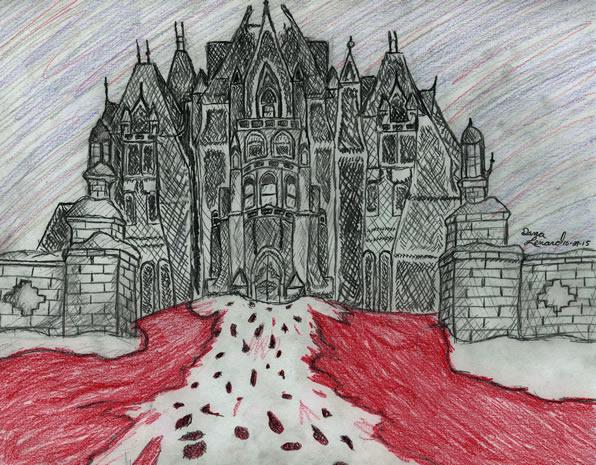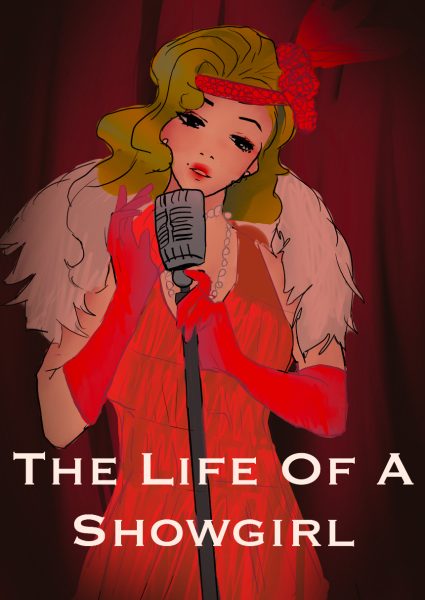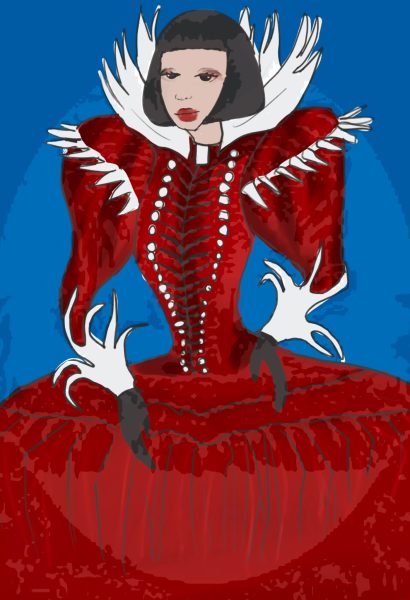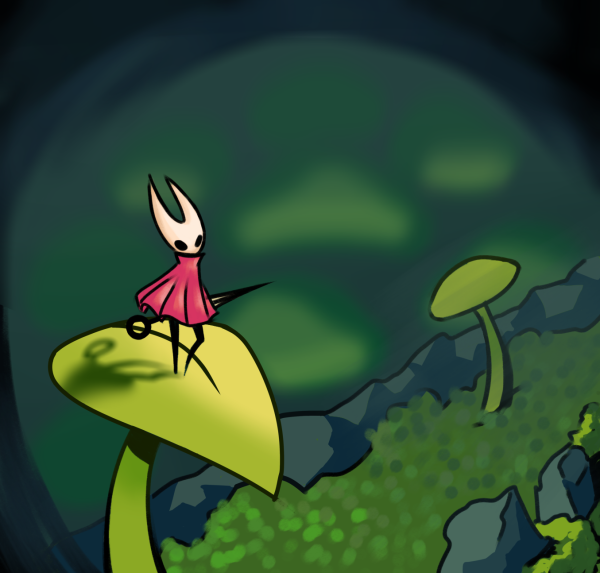‘Crimson Peak’ paints from classic palette

Art by Dana Lenard
Guillermo del Toro is known for creating visually captivating and symbolically rich films. With “Crimson Peak,” Del Toro brings his imaginative, albeit obsessive, eye to the gothic horror novels of Mary Shelley. In doing so, he creates a wildly unique and romantic horror film.
“Crimson Peak” is set in Victorian-era America and England. Edith Cushing is a young and ambitious American writer who rejects the mores of the day by being more interested in her writing than in finding a husband. But Edith is different from other women in more than just her interests; she is haunted by the ghost of her mother, who warns her to avoid Crimson Peak. Despite this opening premise, Edith finds herself under the spell of the charismatic Thomas Sharpe. The couple soon marries and relocates to England, where they move in with Thomas’ sister Lucille at the family mansion, Allerdale Hall. Unbeknownst to Edith, Allerdale Hall is more commonly known as Crimson Peak.
First and foremost, the whole cast does a stellar job inhabiting Del Toro’s gothic world. Mia Wasikowska is thoroughly effective as Edith. Tom Hiddleston gives a surprisingly dynamic and heartfelt performance as Thomas. Far scarier than the ghosts, however, is Jessica Chastain as Lucille. But the real star of the film is Allerdale Hall itself: a mansion alive and heaving with menace and horror.
Del Toro spares no expense and overlooks no detail when it comes to crafting his film sets. For instance, he built a full-size troll market with real materials for “Hellboy II: The Golden Army” despite the fact that only a small portion of the immense set was ever featured in the film. It should come as no surprise, then, that Del Toro actually built an entire Allerdale Hall for this film. While it may seem grossly expensive and unnecessary, the visual impact of Allerdale Hall is what makes “Crimson Peak” an immersive experience.
“Crimson Peak” is more than just gorgeous visuals. Every detail carries symbolic weight. One of the most enigmatic uses of imagery in the film comes from the falling snow and leaves that enter Allerdale Hall through a hole in its decrepit roof.
Del Toro’s use of unusual cinematography techniques creates intriguing images. For example, Del Toro contrasts the pale whiteness of Edith against the darkness of Thomas’ clothes, and in a scene in which the characters embrace, the darkness literally envelopes and overtakes the light.
While the story is an homage to the gothic horror novels of Mary Shelley, it also contains elements of Del Toro’s other works, especially “The Devil’s Backbone.” Despite its branding as a horror film, Del Toro does not traffic in the “Friday the 13th” version of horror. Del Toro portrays horror here only in the most gothic sense. The film never strays far from its romantic literary roots. In fact, Del Toro’s “Pan’s Labyrinth” was much scarier than “Crimson Peak.” This is because the film is not trying to scare, but rather craft a classic ghost story.
“Crimson Peak” is completely unique from the other horror films in theaters today. While many films use jump scares and gore to win cheap frights, “Crimson Peak” chooses to tell a romantic ghost story that is more appropriate for a literature class than a Halloween party. While it is a little disappointing that Del Toro did not choose to show off just how terrifying his films can be, he did make a mesmerizing and provocative film.
Your donation will support the student journalists of Saint Viator High School. Your contribution will allow us to purchase equipment and cover our annual website hosting costs.







